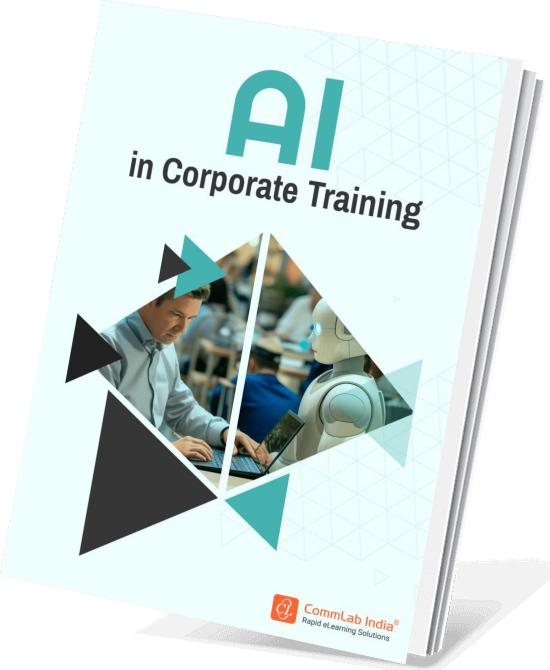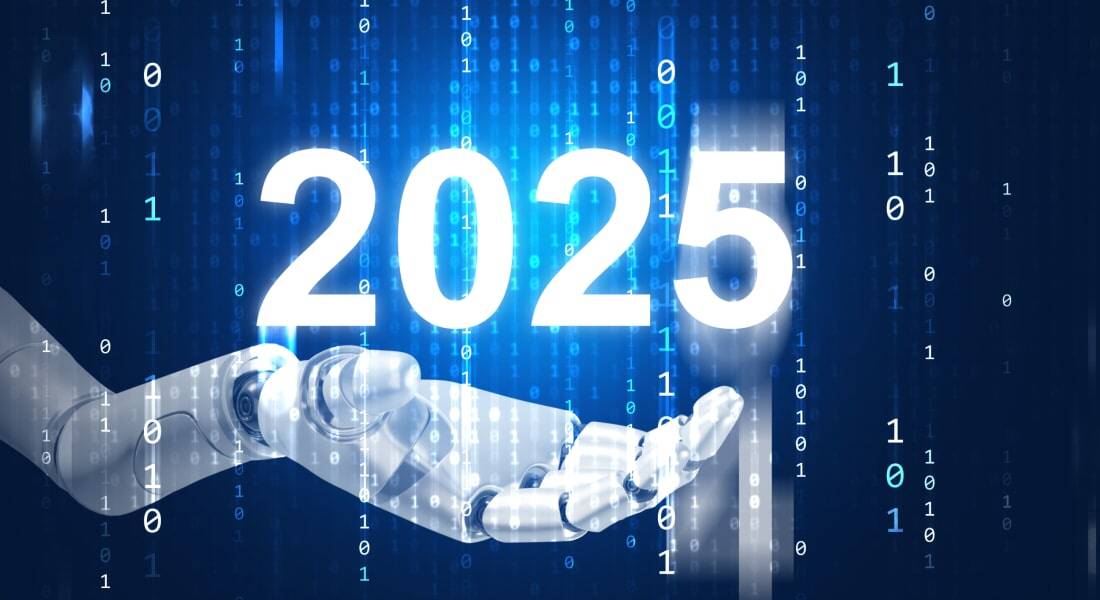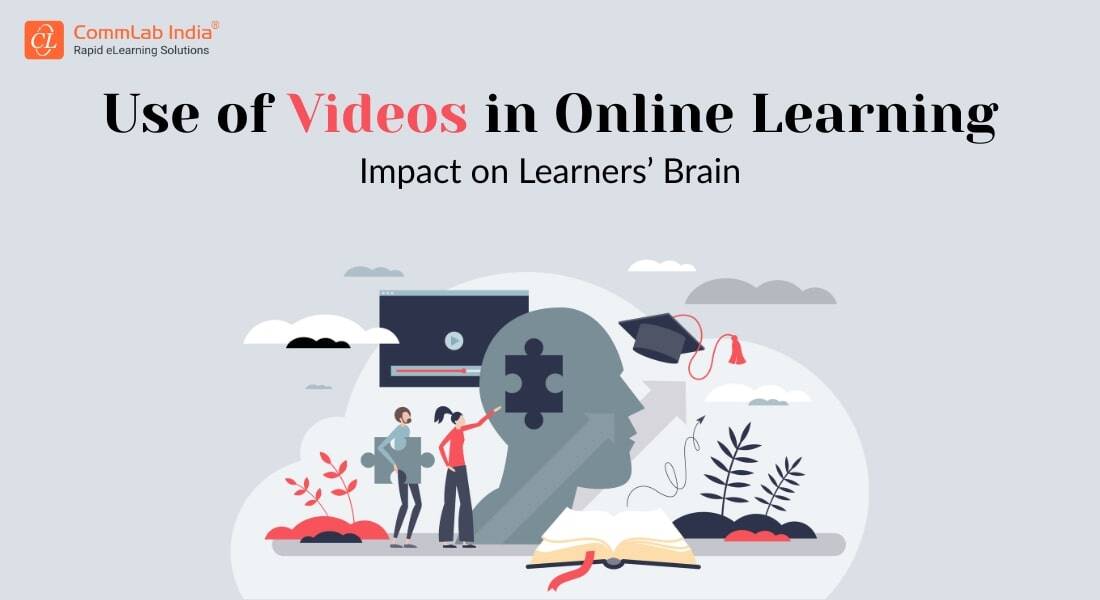AI-Enhanced Learning Across the Employee Lifecycle — Podcast Excerpt

In today's fast-paced digital landscape, the buzz around artificial intelligence (AI) is impossible to ignore. It's not just a trend, it's set to revolutionize every facet of our lives, including how we learn and grow in the workplace. From onboarding new hires to ongoing development and performance evaluations, AI is transforming the employee lifecycle in ways we never imagined.
→ Download eBook: AI in Corporate Training
In this excerpt from our CommLab India’s eLearning Champion podcast, we delve into the transformative impact of AI in transforming learning across the employee lifecycle. We’re joined by Shalini Merugu, Director of Learning Solutions at CommLab India, who brings over 18 years of experience in L&D consulting and solution design.
Tune in to the podcast for interesting insights!
Table of Contents
- What does the Employee Lifecycle Involve?
- How does L&D Engage with the Employee Lifecycle?
- How to Create Learning Paths to Take Learners from Where they are to Where they Need to be?
- How can AI Help in Employee Development?
- How Can Manager Training Be Integrated into the Employee Lifecycle?
- How does L&D Support Various Employees throughout their Employee Lifecycle?
What does the Employee Lifecycle Involve?
The employee lifecycle begins with recruitment. Once a candidate joins the organization, onboarding is conducted to help new hires feel welcome, understand the company’s culture, policies, their department, and role, and provide resources to familiarize them with the organization. Next is the employee development phase, which focuses on the ongoing development of skills to ensure they can perform their job effectively. Following this is the retention phase, where the organization's goal is to ensure employees are satisfied and fulfilled in their careers. Performance management, talent management, and employee engagement are significant factors in this phase. Finally, the offboarding process ensures that if an employee decides to leave, the exit is handled smoothly.

How does L&D Engage with the Employee Lifecycle?
In the employee lifecycle, it's important to recognize that various stakeholders are involved, not just the employees. L&D plays a key role in supporting these stakeholders. To ensure training programs succeed, several elements need to be addressed, starting with aligning them with the organization's business strategy. Understanding business goals and desired outcomes is crucial for effective support.
Business outcomes guide the performance expectations for each role, leading to performance-driven learning objectives that form the basis of all learning initiatives. AI tools can help in this process.
For a healthy learning environment, business units and HR should collaborate on prioritizing learning initiatives. Traditionally, there has been a tendency to work in silos, but this is an opportunity for L&D to bring business units and HR together from the start, ensuring both are equally invested.
Additionally, assessing the current capabilities of the workforce is essential. Without understanding where learners currently stand, it's impossible to help them reach their target skills. This assessment is a crucial step that sets the foundation for all future design efforts.
How to Create Learning Paths to Take Learners from Where they are to Where they Need to be?
1. Recognize the Importance of AI-Enabled Platforms
Access to AI-enabled platforms is essential for creating well-designed learning journeys tailored to different roles within the organization. These journeys should provide learners with visibility into their learning roadmap, supported by the L&D function.
2. Execute Initiatives Effectively
The next step involves launching and scaling initiatives efficiently to achieve the desired outcomes.
3. Measure Business Impact
To satisfy leadership and stakeholders, it's crucial to measure the impact of training on business outcomes. Aligning with business strategy and establishing KPIs allows us to demonstrate this impact effectively.
4. Collaborate with HR
A close partnership with HR is vital. L&D can support HR by addressing the HR agenda and enhancing the employee life cycle, particularly in recruitment and training initiatives.
5. Understand the 70:20:10 Learning Model
Familiarity with the 70:20:10 model is key to enhancing our learning ecosystem. This model illustrates that 70% of learning occurs on the job, 20% through social learning, and 10% via formal training. Integrating all three elements is essential for a robust learning experience.
6. Explore the Role of Technology
Technology underpins the entire learning ecosystem. Without the right technology platforms and digital solutions, including AI tools for design and development, learners would miss out on rich and diverse learning experiences.

AI in Corporate Training
Partner, Not Replacement
- AI in Corporate Training
- AI Toolkit for Super-charged Learning
- Challenges to Consider with AI Implementation
- And More!
How can AI Help in Employee Development?
AI can significantly enhance employee development by utilizing data throughout the employee lifecycle. AI-driven platforms offer pre-boarding chatbots to assist new hires and create personalized learning paths based on individual job profiles, career goals, and learning preferences. These platforms adapt training recommendations in real-time, ensuring learners receive the right resources at their point of need. Additionally, virtual mentors and coaching facilitated by AI can transform learning initiatives, while AI chatbots provide immediate support by engaging with learners as if they were human.
How Can Manager Training Be Integrated into the Employee Lifecycle?
New managers often lack the necessary skills to effectively lead their teams. To address this challenge, it is important to implement a structured plan that includes training programs tailored for new managers when they need it.
Training should focus on leadership management principles and accountability, ensuring that managers are well-equipped to handle the demands of their roles. Additionally, it is crucial to prepare managers to oversee a multi-generational workforce, as we currently have five different generations working together. The L&D function should consider the unique demographics and characteristics of each generation when designing and developing training solutions.
Coaching and mentoring are also vital components of this process, as they contribute significantly to employee retention. Moreover, utilizing AI for designing and developing training can enhance learner engagement in ways that traditional methods may not achieve.
How does L&D Support Various Employees throughout their Employee Lifecycle?
Here is a concise roadmap for all employees whether managers, non-managers, HR, or leaders. It encompasses onboarding, talent development, training during performance reviews, and wellness programs, all of which can be facilitated through AI-enabled platforms. Many organizations implement these strategies even without access to AI tools.
For managers, key focus areas include leadership training, team building, performance management, communication training, and conflict resolution. These are essential aspects that require attention.
From an organizational perspective, strategic planning is critical, alongside talent acquisition, leadership development, nurturing a culture of continuous learning, and promoting employee well-being. This roadmap is vital for professionals within their organizations. While AI platforms can analyze data, identify patterns, and provide insights, it ultimately relies on human judgment to determine what is truly needed.
Wrapping Up!
In the rapidly changing business environment, AI-enhanced learning is revolutionizing the employee lifecycle by ensuring that individuals continuously upskill and reskill. By integrating AI into learning and development strategies, companies can equip employees with the tools necessary to excel in their roles. Our comprehensive eBook takes a deep dive into how AI is spearheading this transformation in corporate training, showcasing how L&D professionals are leading the charge in navigating the tech wave. Discover how AI is creating a future-proof workforce ready to tackle tomorrow's challenges.





